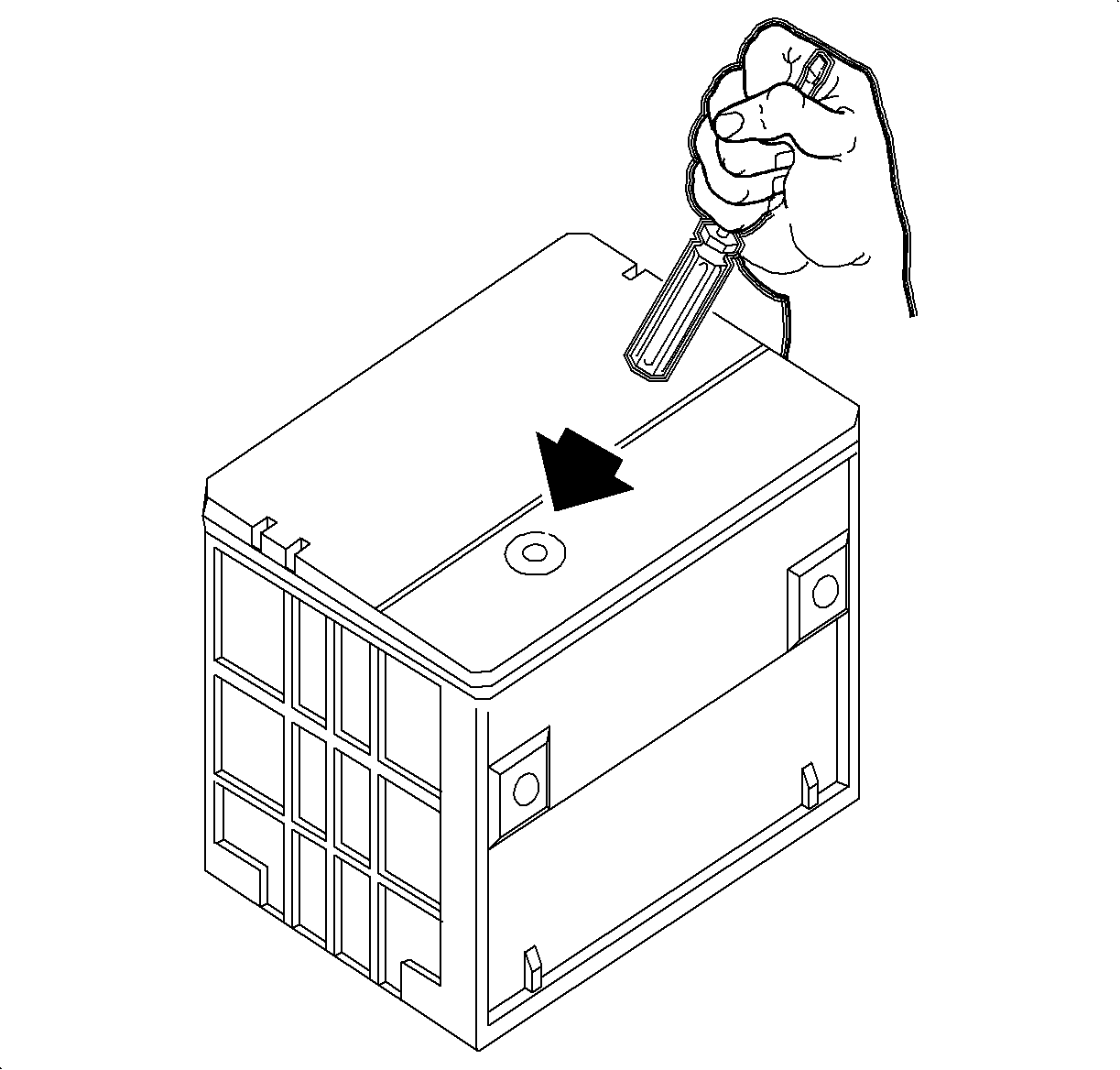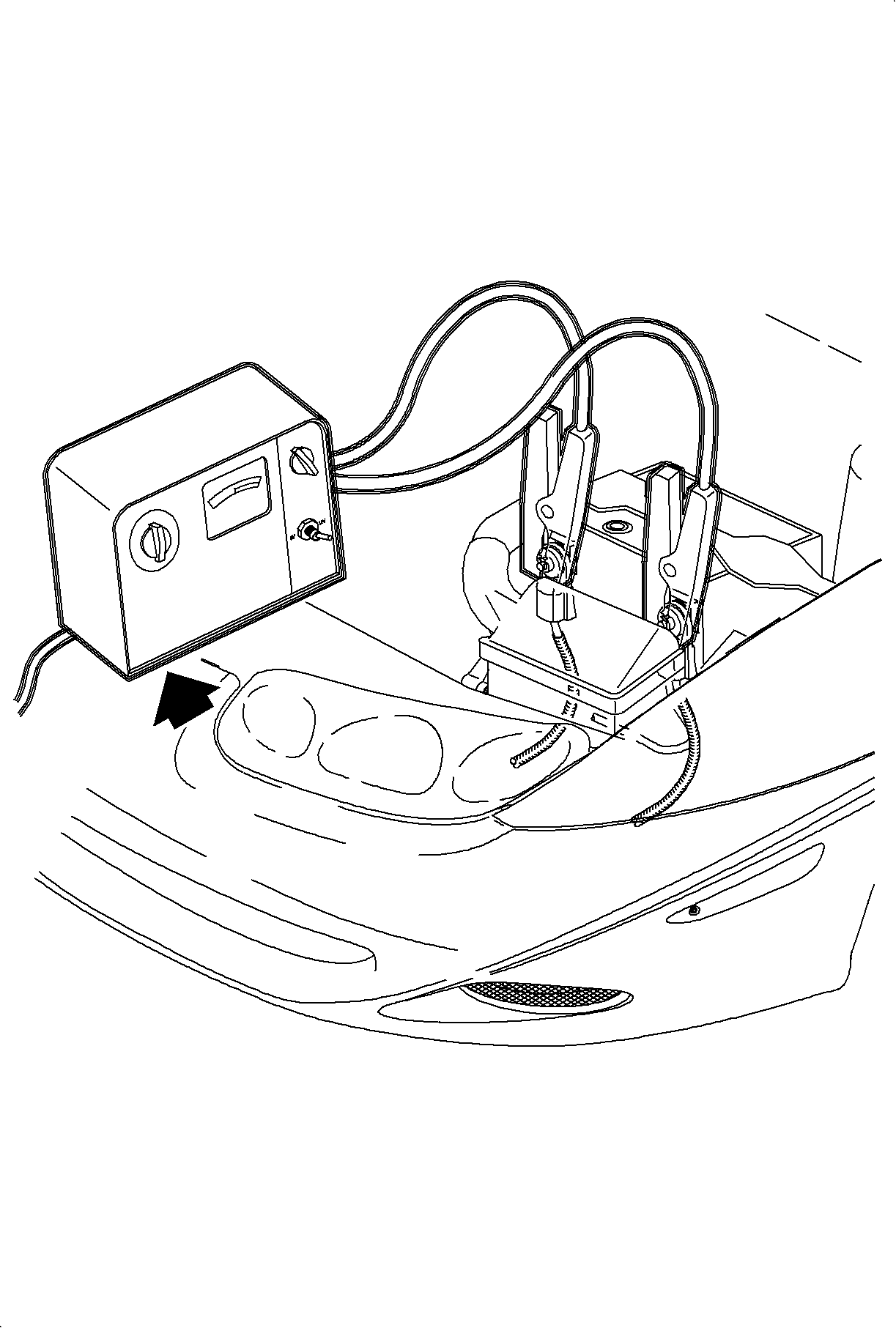Battery Service
General Rules

| • | Do not charge the battery if the hydrometer is clear or yellow. Tap the hydrometer lightly to dislodge any gas bubbles. If the indicator is still clear or yellow, replace the battery. |
| Notice: Do not allow charge settings to exceed 80 amps or the temperature of the battery to exceed 52°C (125°F). Failure to follow these guidelines will result in damage to the battery. |
| • | Charger settings from 3-80 amps are acceptable as long as the electrolyte does not spew out of the vents or the battery does not feel excessively hot, over 52°C (125°F). |
| • | The battery is sufficiently charged when the green dot in the hydrometer remains visible. |

| • | Do not tilt the battery at more than a 40 degree angle. |
| • | Make sure the battery hold-downs are tight. Loose hold-downs will shake the plate material off the grids and shorten the battery life. |
| • | Repeatedly discharging the battery, DEEP CYCLING, will shorten battery life. |
| • | The battery shield must be installed to protect the battery from heat. |
Battery Charging
- Properly connect the battery to the charger and connect the charger to a power source.
- Set the charging rate to the high setting and charge the battery.
- Check the hydrometer indicator hourly for a green dot. Gently tap on the hydrometer to eliminate the possibility of the hydrometer ball sticking. If a green dot is not visible, continue charging.
- Monitor the battery for spewing, gassing, or case temperature above 52°C (125°F). If this occurs, unplug the charger, disconnect the charger from the battery, and load test.
- When a green dot appears and remains, the battery is 65 percent or more charged.
- Unplug the charger. Disconnect the charger from the battery.
| • | Chargers of 75 amperes or more should produce charging times of 1-4 hours. |
| • | Smaller chargers of 10 amperes or less may require charging times of 24 hours or more. |
Completely Discharged Battery

When the battery voltage is below 11 volts, the weak electrolyte is very resistant to charger current. The battery will draw only a few milliamps of charger current and it may be some time before current flow to the battery is high enough to read on most ammeters.
If the current is measurable after the recommended times, refer to step 4 below, the battery is good and the charging should proceed at the normal rate.
Remember that a completely discharged battery must be charged until the green eye appears.
Charging A Flat Battery
Important: Unless this procedure is followed precisely, a perfectly good battery may be needlessly replaced.
A battery that is below 11 volts will require a battery charger that has the ability to produce 15.5-16 volts on the highest setting.
To test the output capability of a battery charger, connect the battery charger to a battery that reads below 11 volts. Take a voltage reading across the positive and negative terminals of the battery with the charger on the highest setting. If the reading is not greater than 15.5 volts, it will not start the chemical reaction needed to charge the battery. A higher output battery charger must be used.
- Measure the voltage across the battery terminals with a DVOM. If the voltage is below 11 volts, the charge current will be low and it could take some time before the battery accepts more than a few milliamps.
- Set the charging rate to the highest setting, for a 12 volt battery. If the battery charger has a TIMER, set the timer to 30 minutes. Check the battery for a GREEN EYE or an EXCESSIVE TEMPERATURE of 52°C (125°F) every 30 minutes.
- Some chargers may have polarity protection circuits in them. This prevents charging unless the leads of the charger are connected to the battery terminals correctly. A completely discharged battery may not have enough voltage to activate this circuit, even though the leads are hooked up correctly. This makes it appear that the battery does not want to accept the charging current. Therefore, follow the manufacturer's operating instructions, telling how to by-pass the circuitry so that the charger can be turned on to charge the battery.
- Battery chargers can vary in the amount of voltage and current they provide. The time required for a completely discharged battery to accept a measurable charger current at various charging voltages may be as follows:
Important: These times are required for a battery to begin to take charge.
Voltage | Charger Setting | Hours |
|---|---|---|
16 or more | High Boost | Up to 4 hours |
14-15.9 | Medium Boost | Up to 8 hours |
13.9 or less | Low Boost | Up to 16 hours |
